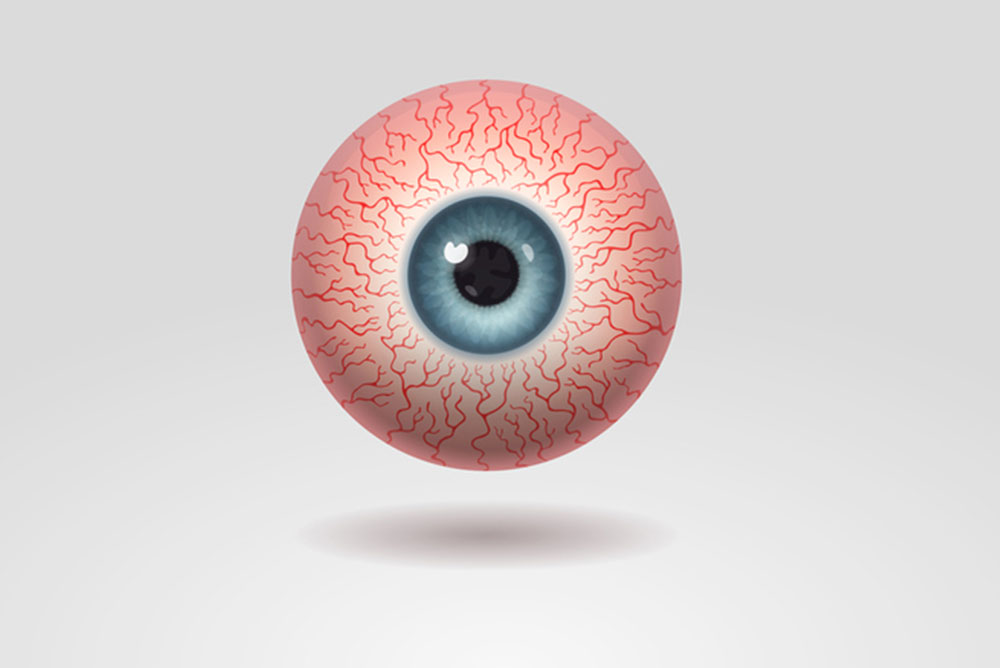
iStock
By Mary Carpenter
MyLittleBird Well-Being series responds to reader questions:
Q: I’ve had two eye doctors tell me never to use eye drops for redness (just get more sleep!). Any information on why that is or why it’s actually safe?
A: “It’s fine to treat minor irritation, exhaustion and occasional redness with eye drops,” according to Medicalnewstoday. But eye drops that work as vasoconstrictors, like Visine, can cause redness rebound if used too many days in a row. The alternative, lubricating drops, known as artificial tears, can be more helpful—though the most effective ones require a prescription.
The “just get more sleep” part of the advice, meanwhile, is increasingly a focus of research on how to accomplish that, as well as on how interference with sleep affects whole-body health. “Being exposed to light when your body ought to be resting…can have a significant negative impact,” reported Northwestern neurologist Phyllis Zee and colleagues. In their study, “just one night of moderate light exposure during sleep [like that coming from streetlights outside an unshaded window] impaired glucose and cardiovascular regulation in otherwise healthy young study participants.”
For red eyes—also pink, yellow or orange—the best treatment is usually time. And even when appearing completely bloodshot, they are usually nothing to worry about. In the case of discoloration—the result of tiny blood vessels swelling, leaking or bursting —eyes can take as long as three weeks to absorb the blood and slowly turn white again. When linked to irritation caused by an object like an eyelash, redness should disappear within several hours, although longer-lasting discoloration due to an injury, such as a scratch, can lead to infection and require antibiotic treatment to avoid lasting damage.
Highly contagious conjunctivitis—also called pinkeye and characterized by extreme itchiness—requires antibiotics, too, as well as frequent hand-washing to prevent spreading. A rare cause of redness, uveitis—inflammation of the eye that can come on suddenly, often accompanied by pain and blurred vision—is a reason to seek immediate medical care. And regular ophthalmological visits can watch out for swelling linked to glaucoma.
Dry eyes alone can be a reason for seeking medical treatment. Dry Eye Syndrome (DES) has been publicized in recent years by Jennifer Anniston talking about her affliction on TV. Also called keratoconjunctivitis, DES includes decreased tear secretion, production of poor-quality tears and/or accelerated evaporation of tears, associated with swelling around and on the surface of the eyes.
Common causes of excessive dryness include hormonal changes during menopause, air pollution, winter weather and seasonal allergies. Allergy treatments like antihistamines and decongestants can make dry eyes worse, but teasing out the cause can be difficult. As a result, some allergy sufferers rely on Alaway antihistamine eyedrops in the morning; and Systane Ultra lubricating drops for symptoms of DES at other times of day.
Dry eyes can, alternatively, be a symptom of the immune disorder called Sjogren’s syndrome, which affects moisture-producing glands throughout the body and occurs most often in women over 40. They may also be a symptom of other immune-related conditions like rheumatoid arthritis. Deficiencies in vitamin A and thyroid hormone can be other reasons for eye dryness.
Finally, overuse of so-called “redness relief” eyedrops, which prolongs or even increases redness, can be another reason for seeking medical intervention. Writes New Jersey ophthalmologist Sydney Tyson, “Over time [redness relief drops] really prevent your eyes from naturally recovering.”
Redness-relief drops work by constricting superficial blood vessels on the eye surface that may have dilated to help the eyes respond to irritation. When the drops’ effects wear off, vessels can dilate to an even larger degree, which increases redness and is why experts advise using these drops “one to two days maximum.”
Lubricating drops, on the other hand, increase blood flow to the surface of the eyes and “will actually help repair the damage done by exposure to adverse conditions,” says Tyson. (Concern about preservatives in lubricating drops have led many to choose preservative-free “PF” versions of popular brands, such as Refresh.) Tyson includes redness-relief drops in the category of adverse conditions.
For sufferers of eye problems who have a hard time getting enough sleep, the Northwestern team advises against eating at night, as well as eliminating light as much as possible. Chronobiotic drugs like melatonin can also help “open the doors of sleep by inhibiting the propensity to wakefulness” in the brain, which can occur in late evening, according to researchers in China and Texas. In addition, melatonin works as “the chemical code of darkness [providing] information crucial to the neuroendocrine system.”
I haven’t used redness-relief drops since a bad experience with Visine years ago but was unfamiliar with the alternative lubricating potions. Now I will see if they soothe sore eyes due to seasonal allergies, as well as to insufficient sleep. But hearing the advice to “just get more sleep” makes me bristle: even with the help of nightly melatonin, my best efforts sometimes fail. There are, however, remaining steps I could take, such as skipping coffee ice cream for dessert, putting away the mystery page-turner and quitting Words with Friends. And I should probably readjust those cumbersome blinds.
—Mary Carpenter regularly reports on need-to-know topics in health and medicine.
MyLittleBird often includes links to products we write about. Our editorial choices are made independently; nonetheless, a purchase made through such a link can sometimes result in MyLittleBird receiving a commission on the sale, whether through a retailer, an online store or Amazon.com.

Very good advice—thank you. I can follow most of it, but can’t give up Words With Friends! Addicted!
I don’t do Words With Friends anymore, but my midnight addiction is Wordle, plus Worldle (guess the country by its silhouette), plus the NYT Mini, plus one quick run through the NYT Tiles (a simply matching game) and a last-gasp effort to complete Spelling Bee. I know this isn’t good for me.